In the ever-evolving landscape of smart homes, an intriguing battle of brilliance unfolds WiFi vs. Bluetooth LED strips. This debate illuminates discussions among tech enthusiasts and homeowners alike, as each offers a distinct approach to smart lighting. While the choice between WiFi and Bluetooth LED strips might seem like a mere preference, it significantly impacts the ambiance and functionality of modern living spaces. This showdown not only highlights the technological advancements in LED strip lighting but also emphasizes the importance of selecting the right system for your smart home.
At the forefront of this illuminating discussion stands Tom, a seasoned veteran in the LED industry since 2005. Tom’s extensive journey through the evolving world of LED technology equips him with invaluable insights that shed light on the complexities of smart lighting. His expertise not only guides homeowners through the labyrinth of choices but also instills confidence in professionals seeking to enhance their projects with the latest in lighting innovation. Trust in Tom’s profound knowledge as he navigates the nuances of WiFi and Bluetooth connectivity in LED strips, offering clarity amidst the myriad of options.
Diving into this comprehensive blog post, readers will embark on an exploration of the contrasts and conveniences offered by WiFi and Bluetooth LED strips. The journey delves deep into the realms of connectivity, control, energy efficiency, and security, painting a vivid picture of how these technologies integrate into the smart home ecosystem. This exploration promises to unravel the layers of smart lighting, presenting an in-depth comparison that highlights the latest trends and their implications for your home’s ambiance and functionality.
So, whether you’re a tech enthusiast eager to automate your home with the latest in lighting technology or a newcomer curious about smart lighting’s potential, let’s dive right in! Under Tom’s expert guidance, we’ll illuminate every aspect of this dynamic topic, ensuring you’re well-equipped to make an informed choice that brilliantly transforms your living space. Let’s get started right away, venturing into the vibrant world of smart lighting with the insightful comparison of WiFi vs Bluetooth LED strips.
Diving Into Smart Lighting: The Basics
In today’s world, where the push for smarter, more adaptable living spaces is stronger than ever, smart lighting stands at the forefront of this movement. Beyond merely illuminating the corners of a room, smart lighting is reshaping how we experience and interact with our environments. It offers the unparalleled capability to customize the ambiance of any space with ease—whether through a smartphone app or voice commands; every aspect of lighting can be tailored to fit the moment, from dimming lights for a movie night to synchronizing them with your favorite tunes for a party.
Imagine the convenience of lights that adjust themselves according to the time of day or the ambiance you desire. Smart lighting brings this vision to life, seamlessly merging with your daily life to create a home that is not only more intelligent but also more in tune with your rhythm and style.
WiFi vs Bluetooth: The Foundation of Smart LED Strips
At the heart of the evolution of smart lighting are two pivotal technologies: WiFi and Bluetooth. Each acts as a crucial link between the lighting in your home and the devices you use every day, offering distinct advantages and posing unique challenges.
WiFi LED Strips: WiFi LED strips connect to your home network, offering the freedom to control your lighting from anywhere. The ability to adjust settings whether you’re in another room or on another continent is a testament to the power of WiFi connectivity. These strips are ideal for those looking to create an interconnected smart home ecosystem, enabling sophisticated automation and voice control compatibility with platforms like Amazon Alexa and Google Assistant. However, the reliance on a continuous internet connection means that WiFi LED strips might not perform optimally in homes with weak signal areas, and the advanced technology embedded within these strips often comes at a higher price point.
Bluetooth LED Strips: For those seeking simplicity and ease of use, Bluetooth LED strips present an attractive option. By establishing a direct connection to your mobile device, these strips bypass the need for a WiFi network, offering a straightforward setup and control process. Perfect for targeted lighting in specific rooms or for tasks that require focused illumination, Bluetooth strips embody ease of use. Yet, this simplicity has its trade-offs. The effective range of Bluetooth is limited, necessitating proximity for control, and these strips generally offer less in terms of integration with wider smart home systems and remote accessibility.
The Ins and Outs of WiFi LED Strips
WiFi LED strips illuminate the forefront of smart home innovation, marrying unparalleled connectivity with sophisticated control. These advanced lighting solutions seamlessly integrate into your home’s wireless network, empowering you with the ability to transform your environment with a simple tap on your smartphone or a voice command. Whether it’s setting the ambiance for a cozy movie night or adjusting the lighting for an intimate dinner, WiFi LED strips make it possible from anywhere across the globe.
Advantages of WiFi LED Strips:
Remote Control from Anywhere: The standout advantage of WiFi LED strips is the freedom they offer. Imagine adjusting your home’s lighting while at the office or even while vacationing in another country. This remote accessibility not only adds convenience but also elevates home security. You can simulate presence in your home by scheduling lights to turn on and off, creating the illusion of occupancy and deterring potential intruders—a feature particularly useful for those who travel frequently.
Integration with Smart Home Systems: The true potential of WiFi LED strips is unlocked in their ability to become part of a larger smart home ecosystem. They effortlessly communicate with popular platforms like Amazon Alexa, Google Assistant, and Apple HomeKit, allowing for voice-controlled convenience and integrated routines. Envision your lights automatically adjusting as your smart thermostat changes settings or syncing with your entertainment system for an immersive movie-watching experience—this level of automation and integration positions WiFi LED strips as an essential component of any smart home.
Disadvantages of WiFi LED Strips:
Higher Cost: Innovation comes at a price, and WiFi LED strips are no exception. The advanced capabilities and integration features of WiFi strips often result in a higher price point compared to simpler lighting options. This might be a significant factor for budget-conscious individuals or those planning to install smart lighting in multiple rooms. Despite the higher initial cost, the long-term advantages—such as energy savings, enhanced security, and the sheer convenience of smart control—can justify the investment.
Dependency on a Stable WiFi Connection: The prowess of WiFi LED strips is inherently tied to the strength and reliability of your home’s WiFi network. Weak signals or areas of your home that suffer from connectivity issues can diminish the performance of these smart strips, sometimes resulting in lost connections or delayed responses. Moreover, in the event of an internet outage, the ability to control these lights remotely is temporarily suspended. Therefore, ensuring a robust WiFi setup is crucial for harnessing the full potential of WiFi LED strips and avoiding potential frustrations.
Unraveling Bluetooth LED Strips
In the realm of smart home advancements, Bluetooth LED strips emerge as a beacon of simplicity and efficiency. They distinguish themselves from the more complex WiFi options by offering a straightforward, user-friendly approach to smart lighting. Without the necessity for a connection to a home network, these LED strips epitomize the plug-and-play ethos, catering to both technology novices and those who prefer a minimalist setup. Directly linking to your mobile device, they invite you to personalize your space with just a swipe or tap, offering an intimate and responsive lighting experience that enhances your home’s ambiance with minimal effort.
Benefits of Bluetooth LED Strips:
Simple and Direct Control: The beauty of Bluetooth LED strips lies in their simplicity. By establishing a direct link with your smartphone or tablet, they circumvent the need for additional devices or complex configurations, making your phone the command center for all lighting adjustments. This direct control system is particularly advantageous for immediate lighting changes, adapting effortlessly to the varying needs of your day-to-day life—from illuminating a workspace to creating the perfect atmosphere for relaxation or play in a child’s bedroom.
Cost-Effective and Energy-Efficient: Economically, Bluetooth LED strips present an attractive entry point into smart lighting. Their independence from a WiFi network and the broader smart home infrastructure means lower initial costs and reduced long-term expenditures. Coupled with the inherent energy efficiency of LED technology, which significantly lowers power consumption compared to traditional lighting methods, these strips offer a budget-friendly and environmentally conscious lighting solution. This makes them an ideal choice for eco-aware individuals looking to enhance their home’s lighting without a substantial financial investment or environmental impact.
Limitations of Bluetooth LED Strips:
Limited Range: Despite their advantages, Bluetooth LED strips are not without their limitations, the most notable being their range. There is Restricted to a stable connection within approximately a 30-foot radius, and their effectiveness is diminished in larger areas or multi-room setups. This limitation necessitates careful planning regarding the placement and intended control zones of the strips to ensure consistent performance and avoid connectivity issues.
Less Integration with Smart Home Systems: Another consideration is their relatively standalone nature. In an era where the interconnectedness of smart home devices enhances the functionality and convenience of home automation, Bluetooth LED strips fall short. Their lack of integration with central smart home systems and inability to be controlled through popular voice assistants restricts their utility for those aspiring to a fully automated home environment. This may prompt individuals with comprehensive smart home aspirations to lean towards WiFi-enabled lighting solutions for a more integrated experience.
Bluetooth LED strips, with their straightforward setup, cost efficiency, and direct control appeal, represent an accessible pathway into smart home lighting. However, when choosing the ideal smart lighting solution, it’s essential to weigh these advantages against the constraints of range and smart home integration. For those seeking simple, effective lighting control without the complexities of a connected home system, Bluetooth LED strips offer a compelling option, illuminating the potential for a customized, energy-efficient home lighting environment.
In-Depth Comparison: WiFi vs Bluetooth LED Strips
In the rapidly evolving domain of smart home technology, the choice between WiFi and Bluetooth LED strips represents a crucial decision for homeowners looking to enhance their living spaces with smart lighting. This detailed comparison delves into the critical aspects of range, setup, cost, and compatibility, providing insights that aim to illuminate the path to the best lighting solution for your home.
Analyzing Range, Connectivity, and User Convenience
Range and Connectivity: WiFi LED strips offer a significant advantage in terms of range, leveraging the power of your home’s WiFi network to allow control from virtually anywhere with internet access. This global reach transforms how you interact with your home’s lighting, enabling adjustments from any location, whether you’re lying in bed or continents away. The broader connectivity also facilitates integration with security systems, enhancing your home’s safety. Conversely, Bluetooth LED strips, with their direct device-to-strip connection, are generally limited to about a 30-foot operational radius. This makes them perfectly suited for localized control within specific rooms or areas, offering a more contained yet equally effective lighting solution.
User Convenience: WiFi LED strips stand out for their seamless integration into the smart home ecosystem. They support complex automation, voice commands via assistants, and control through multiple devices, offering a sophisticated and interconnected lighting experience. Bluetooth LED strips, in contrast, prioritize straightforwardness and ease of use, providing a no-frills, immediate control option that’s incredibly user-friendly, making them ideal for those who value simplicity in their smart home interactions.
Setup Complexity and Cost-Effectiveness
Setup Complexity: Setting up WiFi LED strips might present a challenge for some, as it often involves network connections, app configurations, and potential integration with other smart home devices. This complexity, however, paves the way for a highly customizable lighting experience tailored to your specific preferences and needs. On the other hand, the plug-and-play nature of Bluetooth LED strips appeals to a wide audience, offering instant gratification with minimal setup, perfect for those seeking an uncomplicated entry into smart lighting.
Cost-Effectiveness: The sophistication and broad functionality of WiFi LED strips come with a higher price tag, reflecting their enhanced features and integration capabilities. This investment is well-suited to those desiring a comprehensive smart home setup. Bluetooth LED strips emerge as the more economical choice, appealing to budget-conscious consumers and those experimenting with smart lighting for the first time. Their affordability does not compromise on quality, making them a valuable addition to any smart home project.
Compatibility with Existing Smart Home Platforms
The arena of compatibility is where WiFi LED strips truly excel. Engineered for seamless integration with an array of smart home systems and voice assistants, they offer an unparalleled level of control and synchronization within your smart home ecosystem. This connectivity enables a cohesive and intuitive user experience, streamlining daily routines and enhancing the functionality of your home. Bluetooth LED strips, while proficient in their capacity for direct control, typically do not offer the same level of integration with broader smart home systems, positioning them as a more standalone solution.
Navigating the choice between WiFi and Bluetooth LED strips involves careful consideration of your home’s specific needs, your technological preferences, and the desired level of integration with other smart home devices. By understanding the distinctive features, advantages, and potential limitations of each option, you can make an informed decision that brings your smart home vision to life, ensuring a harmonious blend of convenience, efficiency, and innovation in your lighting solutions.
Key Considerations for Selecting Smart Lighting
Delving into the realm of smart lighting unveils a thrilling adventure, yet it beckons you to make choices that harmonize with your lifestyle, financial plan, and home’s technical setup. The myriad possibilities smart lighting unfolds—from crafting the ideal atmosphere for various moments to boosting your home’s security—are vast and varied. In case to traverse this landscape with finesse, it’s vital to pinpoint your needs, weigh your financial capability, and evaluate your home’s connectivity framework.
Evaluating Your Smart Home Requirements and Personal Preferences
Embarking on your smart lighting journey begins with a deep dive into your desires and daily routines. Reflect on whether you seek lighting that dynamically transitions with your day, from the refreshing brightness of morning to the serene glow of evening, or if you aim to orchestrate scenes for reading, entertaining, or dining. The choice between the immediate, tactile response of Bluetooth-controlled lighting and the expansive, remote operability of WiFi-enabled strips hinges on how you prioritize convenience and connectivity in enhancing your living spaces.
Visualizing these preferences, consider incorporating a simple graph that contrasts the scenarios or activities with the most suitable lighting technology. Such visual data can succinctly demonstrate the versatility and application range of both WiFi and Bluetooth LED strips, reinforcing the importance of matching the technology to your lifestyle.
Budget Considerations and Long-term Value
Smart lighting represents a pivotal investment in your home’s ambiance and efficiency. The initial cost spectrum spans from the more affordable Bluetooth solutions to the feature-rich WiFi systems, with their broader scope of integration. When contemplating this investment, it’s essential to not only consider the upfront cost but also the potential long-term savings. LED strips stand out for their low energy consumption and longevity, promising considerable savings on electricity bills over time.
A compelling bar chart showcasing the initial cost versus long-term savings of both lighting types can powerfully illustrate this point. This visual could highlight how, despite the higher upfront cost of WiFi LED strips, their energy efficiency and integration capabilities may offer greater value over time compared to their Bluetooth counterparts.
Assessing Your Home’s Connectivity Setup for Optimal Performance
The cornerstone of an effective smart lighting system is the robustness of your home’s connectivity. WiFi LED strips necessitate a reliable WiFi network to tap into their full potential, demanding a close examination of your network’s strength and coverage. This assessment becomes crucial if your desired lighting areas are distant from the router or known for connectivity issues.
Conversely, Bluetooth LED strips present a straightforward solution that sidesteps network dependencies, ideal for smaller spaces or users favoring ease over extensive control. A diagram or flowchart could be instrumental here, guiding users through deciding between WiFi and Bluetooth based on their home’s connectivity strength and layout.
Navigating the selection of the ideal smart lighting setup is a nuanced process that blends technological considerations with personal and lifestyle preferences. Through a thoughtful examination of how smart lighting can serve your daily needs, a balanced approach to budgeting, and a realistic assessment of your home’s connectivity capabilities, you can brighten your living environment in ways that are not only intelligent but deeply reflective of your individuality.
Making an Informed Decision: Which LED Strip is Right for You?
In today’s era, where the ambiance and functionality of our living spaces are increasingly enhanced by technology, the decision between WiFi and Bluetooth LED strips represents a significant crossroad. This choice transcends the mere selection of a product; it involves picking a solution that resonates with your lifestyle preferences, the spatial layout of your home, and the synergy with your existing smart home ecosystem. As we explore the various considerations and user scenarios, our goal is to equip you with the knowledge to make a decision that not only fulfills your immediate lighting needs but also enriches your living experience.
Detailed Guide on Choosing Between WiFi and Bluetooth Based on Scenarios and User Needs
Selecting the appropriate LED strip hinges on understanding the unique requirements of your living space and how you envision utilizing this smart lighting:
For Large Spaces or Multiple Rooms: WiFi LED strips emerge as the optimal choice for extensive areas or multi-room setups. Their ability to seamlessly integrate with your home’s WiFi network facilitates comprehensive control over your lighting, enabling adjustments from any corner of your home. This connectivity is invaluable for creating cohesive lighting themes throughout your residence or managing lights in rooms that are not continuously occupied.
For Focused Areas or Specific Tasks: In scenarios where lighting needs are concentrated within a particular zone or tailored for specific activities, Bluetooth LED strips excel. Their simplicity and direct control mechanism makes them ideal for localized lighting solutions, such as under-cabinet illumination in kitchens, accent lighting to complement home entertainment systems, or creating ambient lighting in bedrooms.
Integration with Smart Home Devices: Homeowners with a robust smart home infrastructure featuring devices like voice assistants and smart thermostats will find WiFi LED strips to be particularly advantageous. Their compatibility with broader smart home systems allows for a unified and automated home environment where lighting can effortlessly integrate with other devices for a seamless user experience.
Considerations for Ease of Use, Installation, and Overall Satisfaction
When contemplating between WiFi and Bluetooth LED strips, it’s essential to factor in aspects such as user-friendliness, installation process, and the overall satisfaction anticipated from your smart lighting system:
Ease of Use: Your preference for interaction with smart lighting plays a crucial role. WiFi LED strips may involve a detailed setup process, requiring integration with your home network and potentially other smart devices. Conversely, Bluetooth strips offer immediate usability with minimal setup, catering to those who value simplicity and prompt control.
Installation Complexity: The installation demands of WiFi and Bluetooth LED strips can differ markedly. WiFi strips may require strategic positioning to ensure seamless network connectivity and integration. In contrast, Bluetooth strips afford more placement flexibility and are devoid of network dependency, thereby simplifying the installation process.
Overall Satisfaction: The ultimate choice reflects what you most cherish in a smart lighting system. Should you desire a sophisticated, remotely controllable system replete with features like scheduling and scene creation, WiFi LED strips are your go-to. If, however, your preference leans towards simplicity, cost-effectiveness, and direct control, with a willingness to forgo some advanced features, Bluetooth LED strips will serve you well.
Navigating through these considerations—factoring in your spatial requirements, desired functionalities, ease of use, installation process, and integration with your smart home ecosystem—will guide you to the LED strip that not only addresses your current needs but also harmonizes with your lifestyle, thereby enhancing the ambiance and functionality of your living environment. Whether your choice falls on the connectivity-rich WiFi LED strips or the user-friendly simplicity of Bluetooth options, the ideal selection will empower you to redefine your space with lighting that is not only intelligent and efficient but also distinctively yours.
Addressing FAQs on WiFi and Bluetooth LED Strips
Can I control WiFi LED strips when I’m not at home?
Absolutely! One of the standout features of WiFi LED strips is the ability to control them remotely anywhere you have an internet connection. This means you can adjust your home’s lighting while at work, on vacation, or the go, offering both convenience and enhanced security for your home.
Do Bluetooth LED strips require an internet connection?
No, Bluetooth LED strips do not require an internet connection. They operate through a direct connection to your smartphone or tablet via Bluetooth, making them an excellent option for areas with unreliable internet service or for those who prefer a simpler setup.
Are WiFi LED strips compatible with smart home assistants?
Yes, most WiFi LED strips are designed to seamlessly integrate with popular smart home assistants like Amazon Alexa, Google Assistant, and sometimes even Apple’s Siri. This integration allows for voice control of your lighting, adding an extra layer of convenience to your smart home setup.
Can I use both WiFi and Bluetooth LED strips in my home?
Certainly! Depending on the specific needs of different areas in your home, a combination of both WiFi and Bluetooth LED strips offers the best solution. For example, WiFi strips could be used for whole-home lighting schemes, while Bluetooth strips could be employed for targeted areas or specific tasks.
Are smart LED strips energy-efficient?
Yes, both WiFi and Bluetooth LED strips utilize LED technology, which is known for its energy efficiency. LED strips consume significantly less power compared to traditional lighting solutions, helping you save on energy bills while reducing your carbon footprint.
What’s the range of Bluetooth LED strips?
Typically, Bluetooth LED strips have an effective control range of about 30 feet (around 9 meters). Obstacles like walls or furniture can influence this range, so it’s something to consider when planning your setup, especially in larger rooms or outdoor spaces.
How do I update my WiFi LED strip firmware?
Updating your WiFi LED strip firmware involves using the companion app provided by the manufacturer. Most apps will notify you of available updates, which can often be applied directly through the app, ensuring your lighting system benefits from the latest features and security enhancements.
Is it hard to install smart LED strips?
Installing smart LED strips is generally straightforward, with most products featuring adhesive backs for easy placement. The complexity can vary slightly between WiFi and Bluetooth options, primarily if WiFi strips require integration into your home network. Still, manufacturers typically provide clear instructions to guide you through the process.
Can smart LED strips enhance home security?
Definitely! By using scheduling features available in both WiFi and Bluetooth LED strips, you can simulate presence in your home by setting lights to turn on and off at specific times. This can deter potential intruders, making smart LED strips an effective component of your home security strategy.
How long do smart LED strips last?
Smart LED strips are designed for longevity, often lasting tens of thousands of hours before needing replacement. The actual lifespan can vary based on usage patterns and the quality of the product, but you can generally expect many years of reliable service from your smart LED lighting.
Conclusion: Illuminating Your Path to Smart Lighting
In the realm of home automation, the evolution of smart lighting represents a pivotal leap toward creating spaces that are not just illuminated but truly alive. The decision between WiFi vs Bluetooth LED strips offers a spectrum of possibilities, each capable of transforming your home into a haven of efficiency, security, and personalized ambiance. As the industry moves forward, we can anticipate smart lighting solutions that are increasingly tailored to our individual preferences, offering unparalleled energy efficiency and security. Embrace this bright future, where smart LED solutions light up our lives in ways we’ve only begun to explore.
Throughout this exploration of the dynamic world of smart lighting, the distinction between WiFi and Bluetooth LED strips has been thoroughly examined, highlighting the advantages and possibilities each brings to the table. Amidst this array of choices, Unitop emerges as a beacon of excellence in the LED industry. With its unwavering commitment to innovation, quality, and customer satisfaction, Unitop stands as one of China’s premier manufacturers of LED lysbånd og LED neon flex. Their extensive expertise ensures that every product is crafted to elevate your living environment, merging cutting-edge technology with reliability and style.
For those on the cusp of enhancing their homes with these smart lighting solutions or for anyone seeking tailored advice to navigate this vibrant landscape, Unitop is your trusted partner. Reach out to discover how Unitop’s range of LED solutions can illuminate every corner of your home, creating spaces that reflect your unique style and preferences. Let Unitop guide you into the future of lighting, where innovation, efficiency, and aesthetics converge to transform your home into a smart, inviting, and beautifully lit sanctuary.

Tom er nu salgschef for Unitop (Kina) Co, Limited. Han har været i LED-belysning industrien lige siden 2005. Han er ekspert i salg og marketing samt fabriksledelse. Han kan lide bodybuilding, og han er også en vild Apple-fan! Han er en hårdtarbejdende fyr og elsker at lære og prøve nye ting.
E-mail: tom@unitopledstrip.com WhatsApp: +86-18680307140

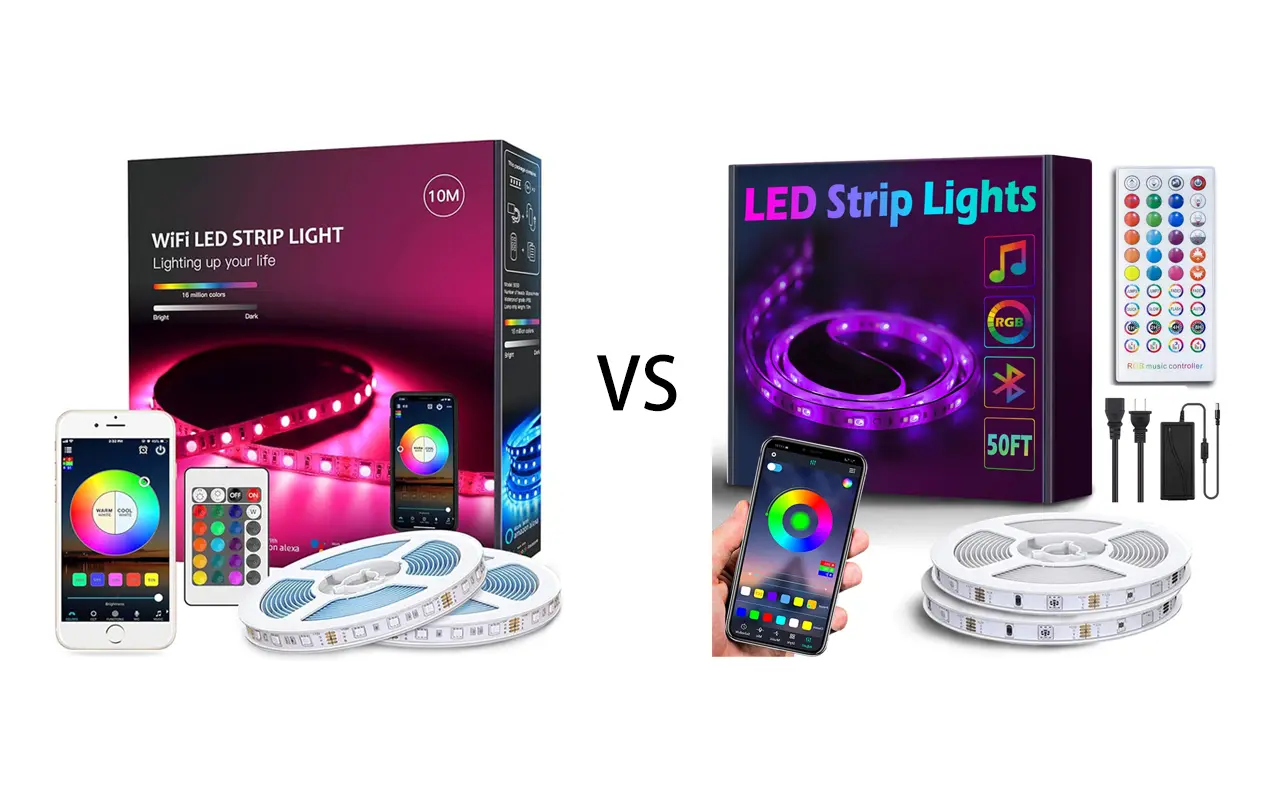
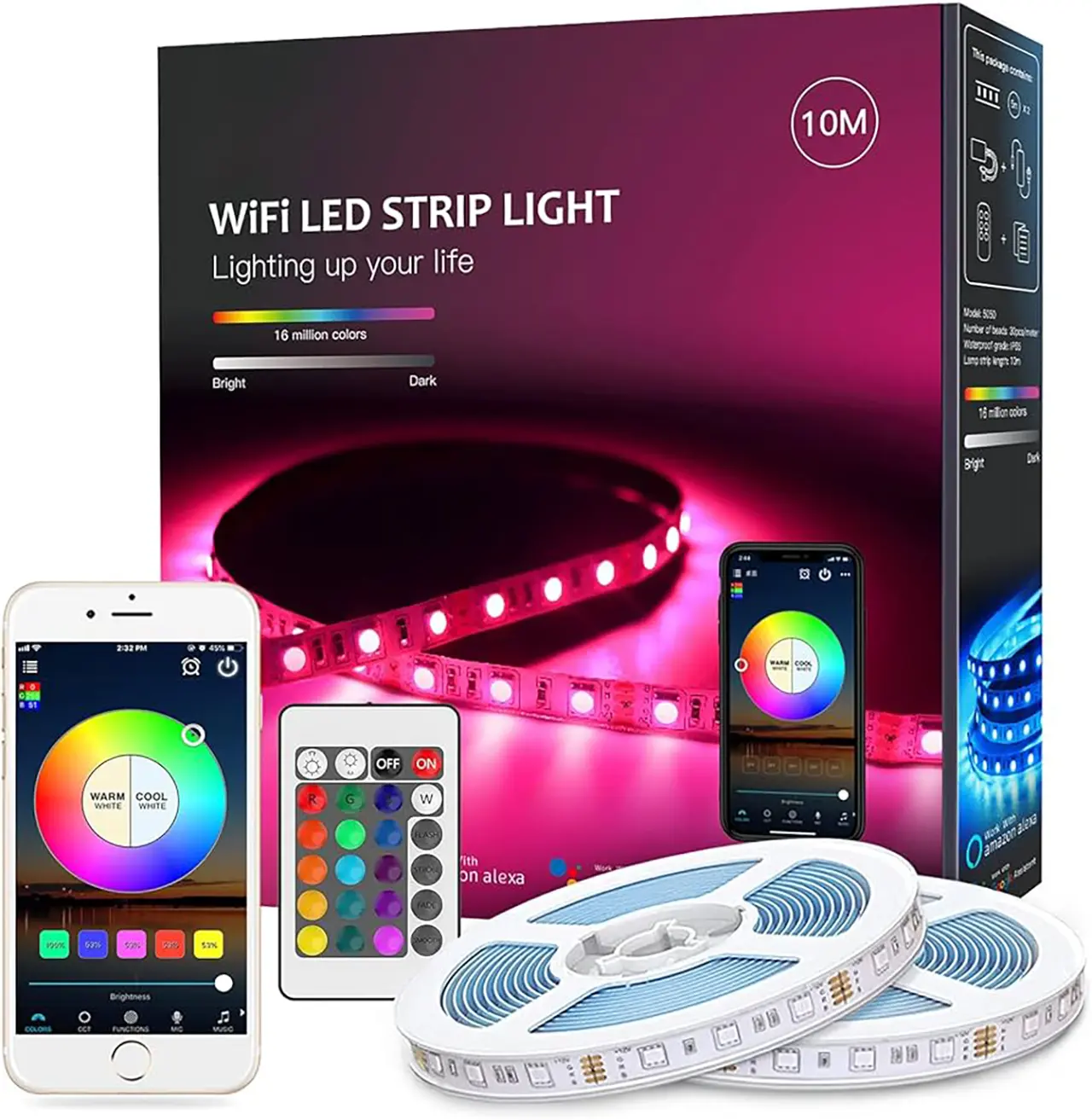
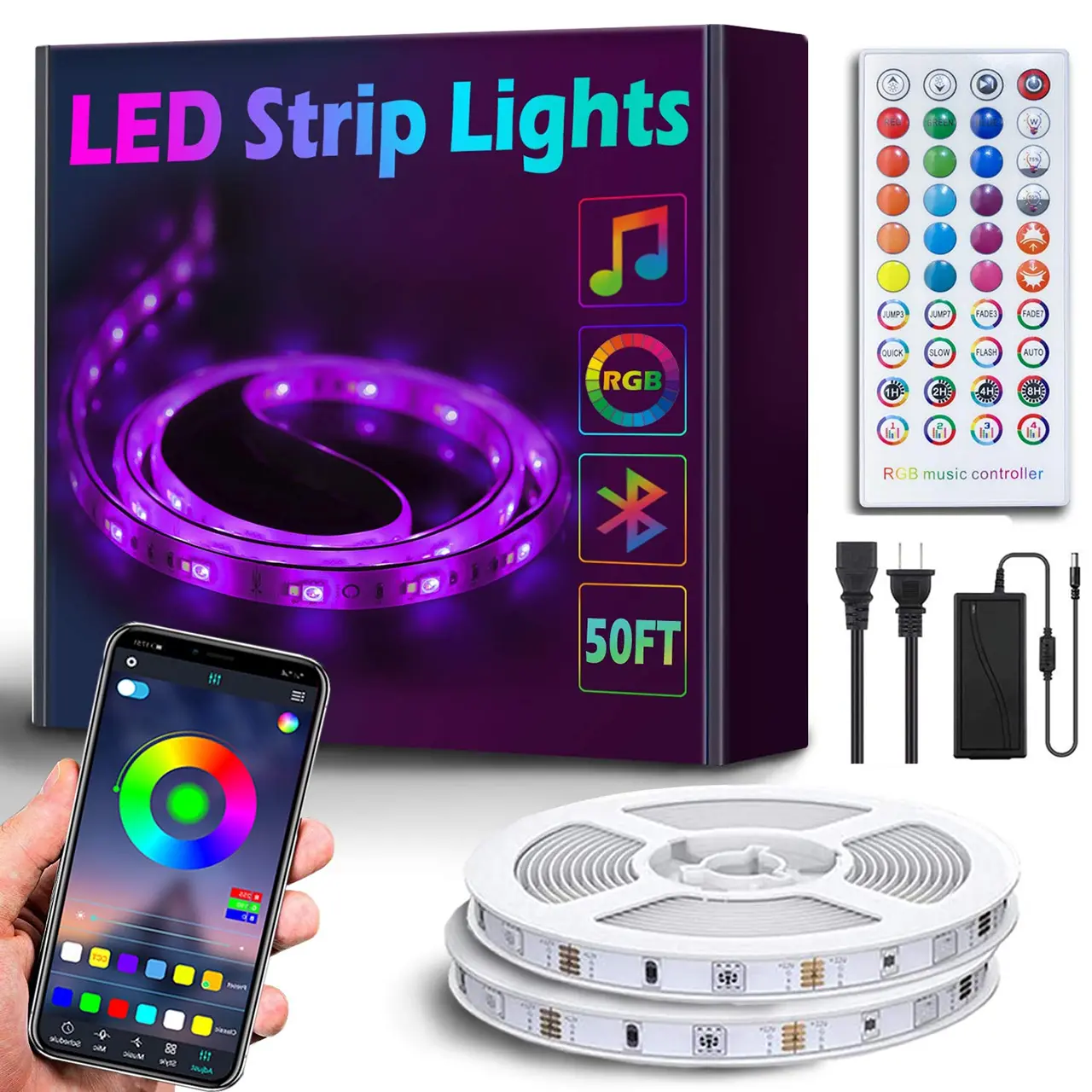
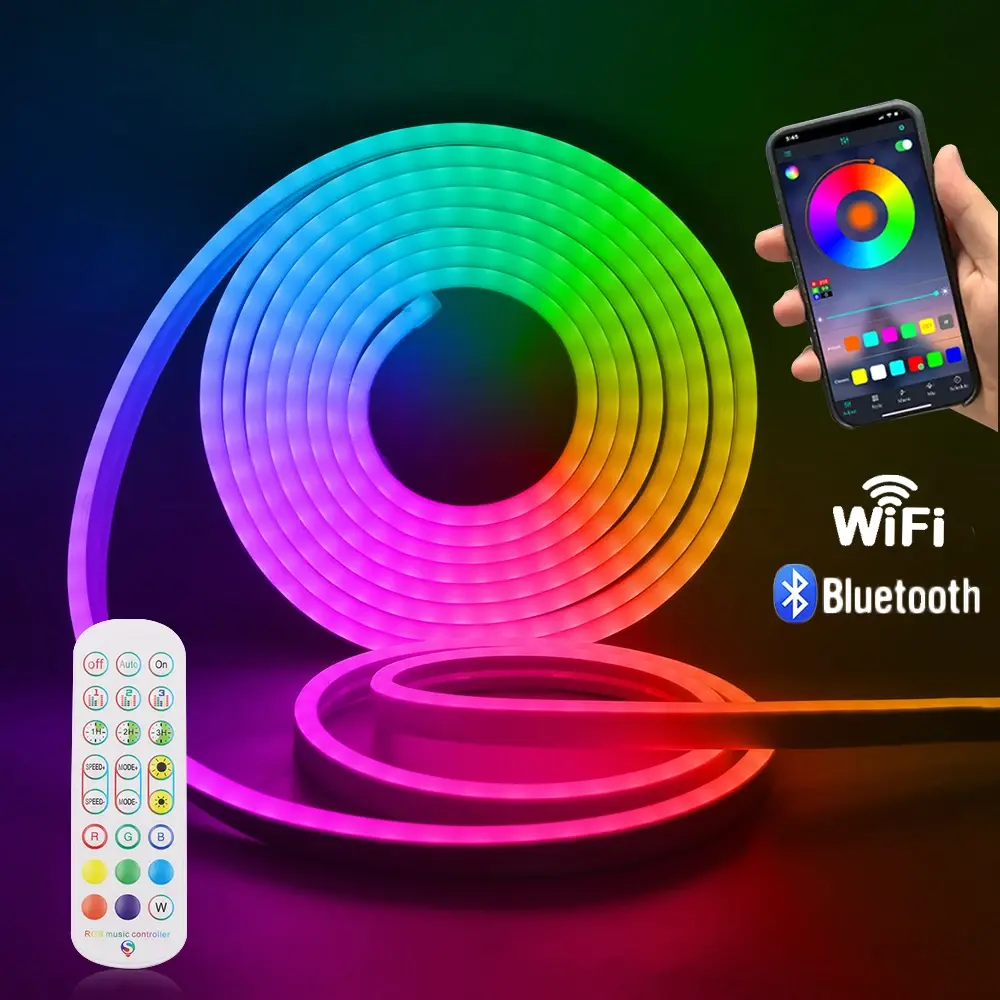

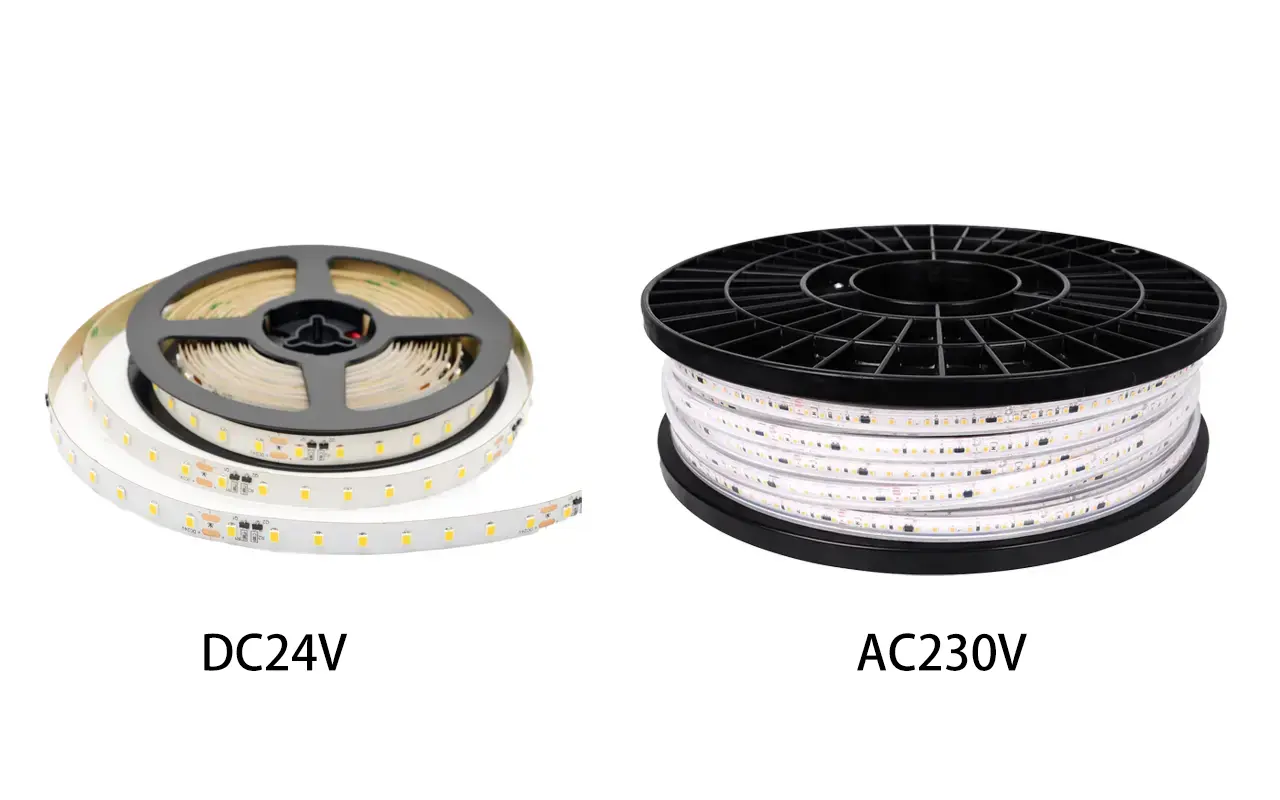
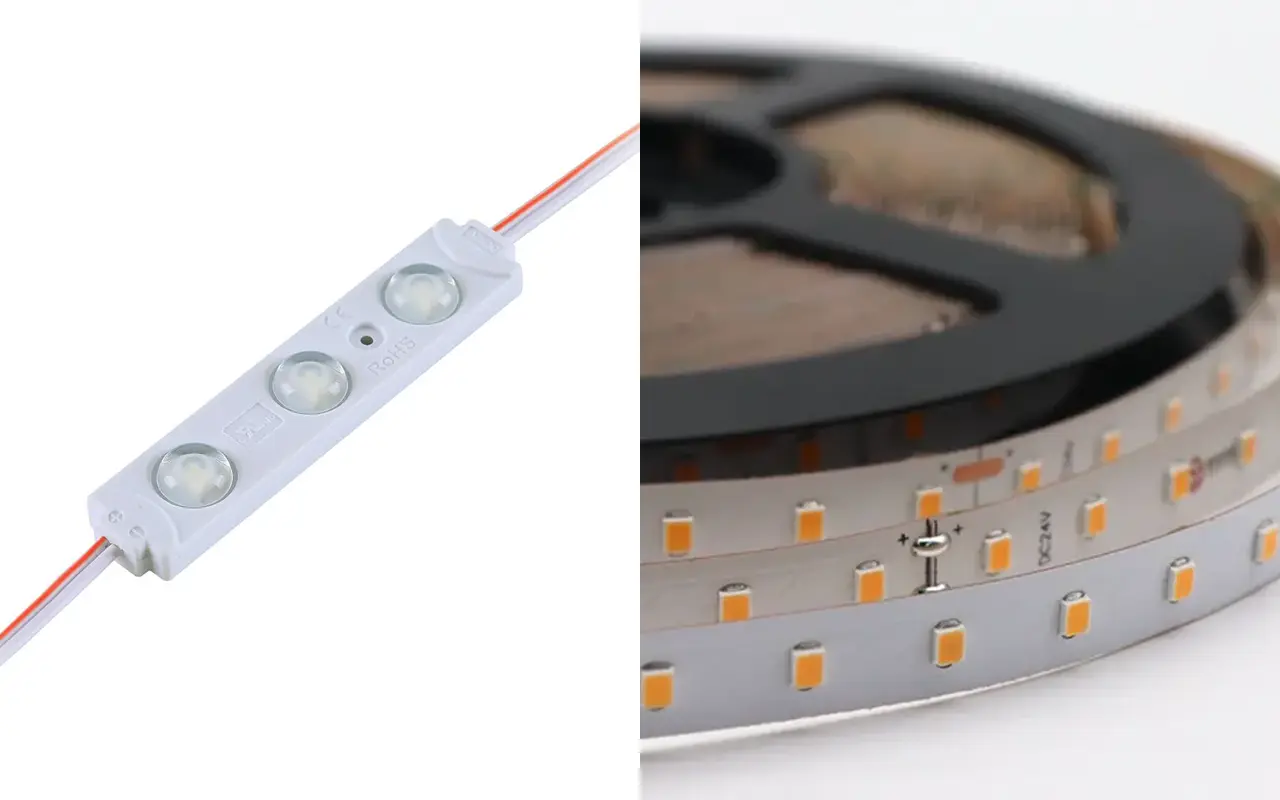
Skriv en kommentar
Vil du deltage i diskussionen?Du er velkommen til at bidrage!